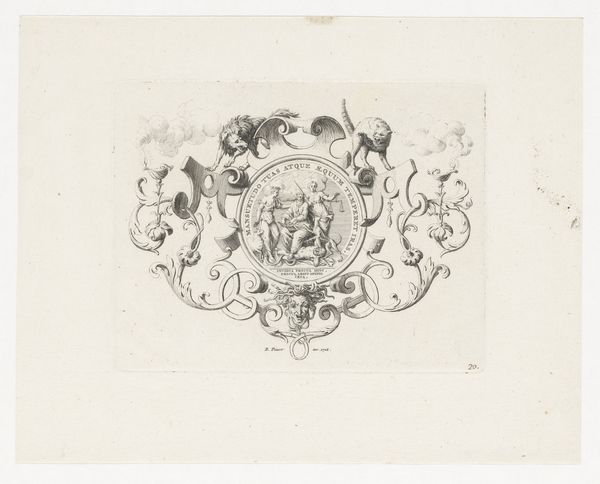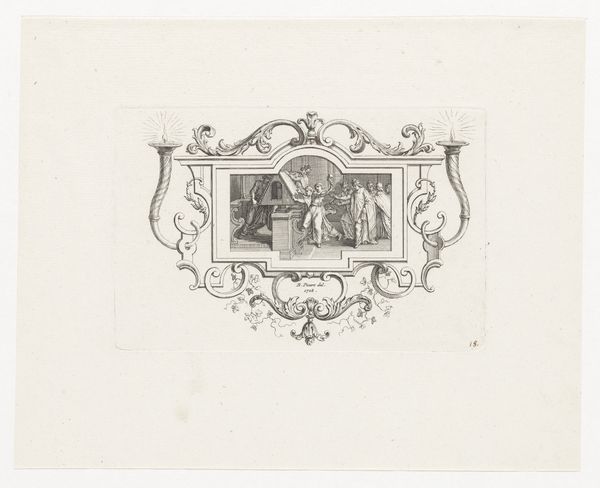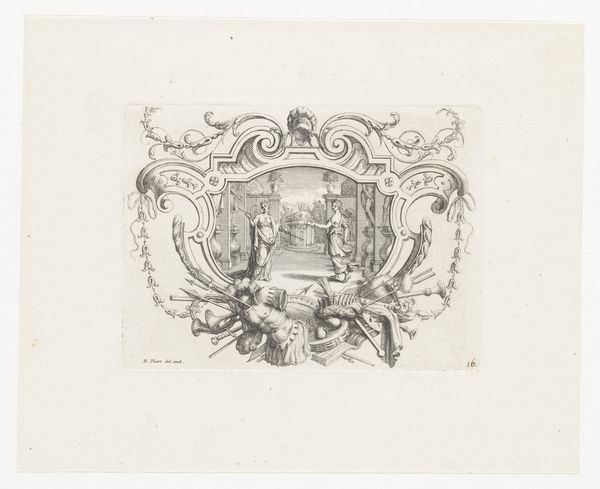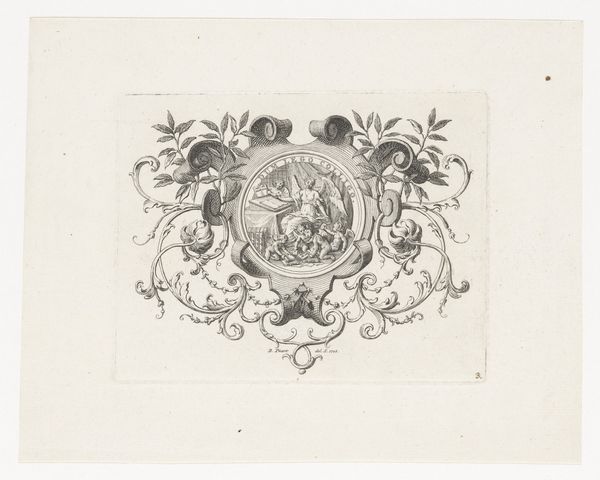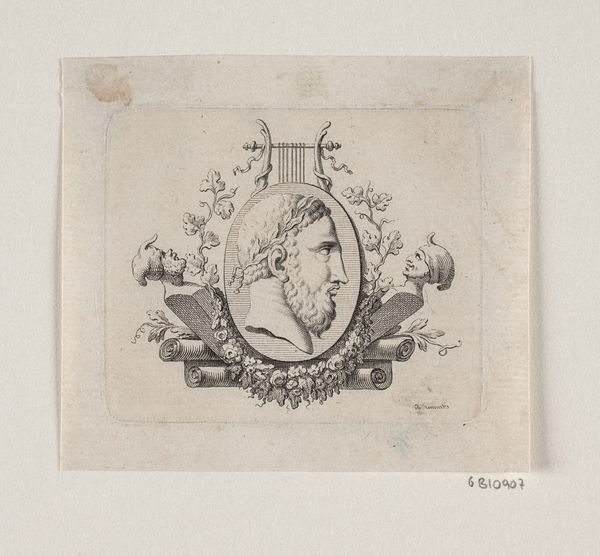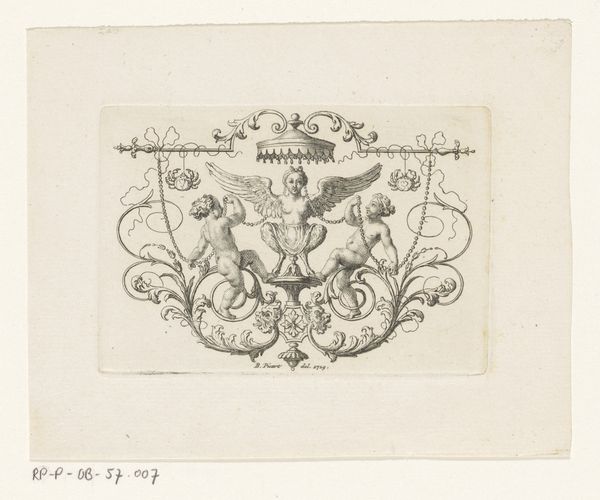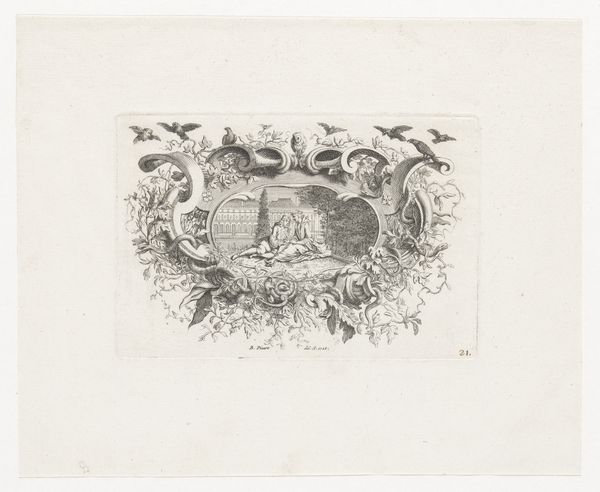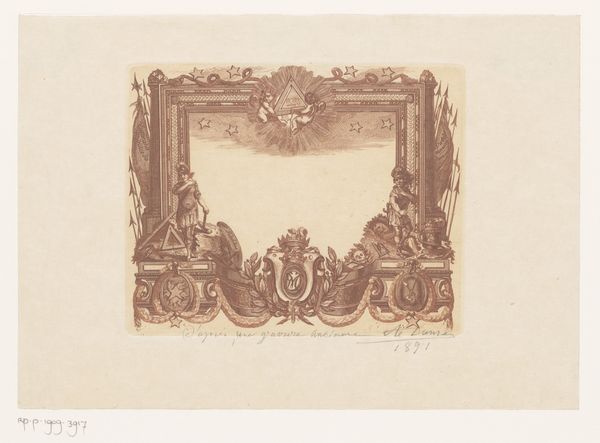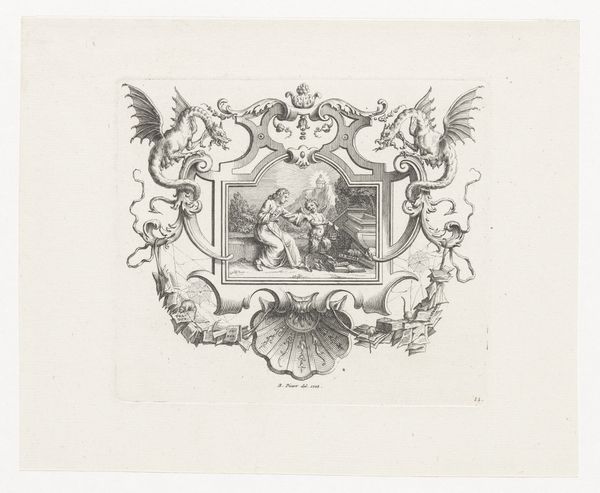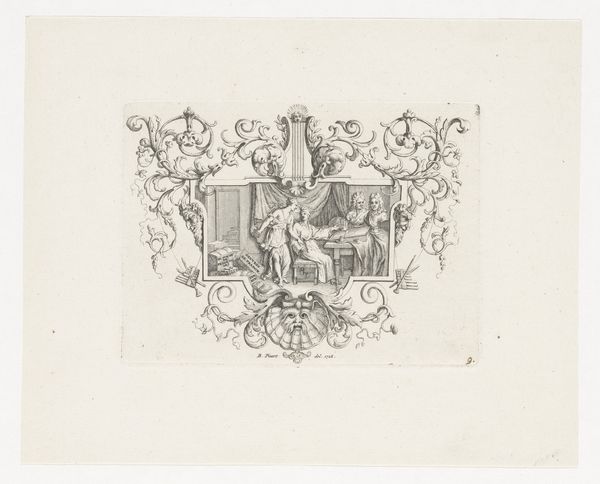
Vignet met het embleem van het exercitiegenootschap Tot Nut der Schuttery, 1786 1786
0:00
0:00
Dimensions: height 135 mm, width 151 mm
Copyright: Rijks Museum: Open Domain
Curator: Here we have a print titled "Vignet met het embleem van het exercitiegenootschap Tot Nut der Schuttery, 1786" dating back to 1786, made by Jan Gerritsz. Visser. It resides here at the Rijksmuseum. Editor: The intricate linework immediately grabs my attention. It looks incredibly precise, almost as if etched onto metal, a delicate but purposeful creation. Curator: Indeed. These shooting societies were civic militias that played a significant role in Dutch society. This print served a specific function: emblem for such a society. Note the motto "Tot Nut der Schuttery," meaning "For the Benefit of the Shooting Society". These groups were about maintaining order but also demonstrating civic pride. Editor: And it's fascinating to consider the materiality here – this isn’t a grand oil painting; it's an engraving, a print intended for wider distribution, maybe even for the shooting society members themselves? What would the paper stock have been like, its weight and feel in the hand? How does that play into our interpretation? Curator: A key point. This wouldn’t have been viewed as ‘high art’ but as a functional item, maybe a bookplate or something similar, circulating amongst the members and the broader public connected to that shooting society. The symbolic weight here is significant – look at the figure in the emblem, classically styled, likely an allegory for civic virtue or defense, positioned above cannons and weaponry. Editor: Exactly! And I'm curious about the printing process, the labor involved in creating this intricate design. It’s not just about the image itself but about the hands that transferred it onto the paper. Think of the repetitive nature of printmaking. And those flags—presumably made from fabric that’s printed on to fabric, which creates layers of craft… It’s about more than aesthetics; it's about the socio-economic reality. Curator: Very much so. We are speaking about an age of burgeoning civic awareness in the Dutch Republic, where groups like these played a vital political role. They were nodes of local power. Editor: Examining these printed items allows for a very concrete insight into a community's self-image. They allow people, us included, a lens to view society’s political intent and craftsmanship that’s deeply rooted within a collective historical timeline. Curator: I concur entirely. The circulation of imagery shapes perceptions, affects society—ultimately molding our world.
Comments
No comments
Be the first to comment and join the conversation on the ultimate creative platform.
